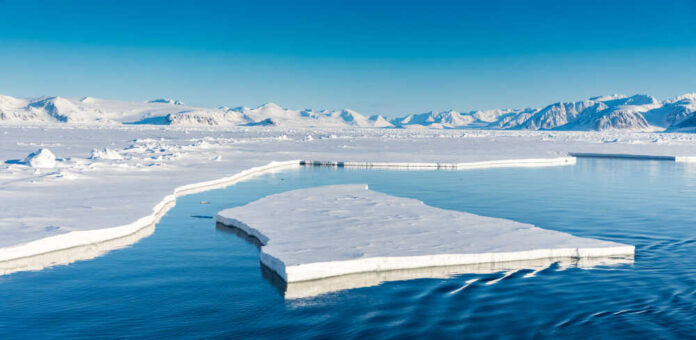
An analysis has shown that emissions from fossil fuel combustion might cause summers in the Arctic to see almost no sea ice by the end of the next decade.
According to experts, this would cause the distinctive environment inhabited by walruses, seals, and polar bears to change from being known as a “white Arctic” to a “blue Arctic” during the summer. According to the “ice-free” definition, the Arctic Ocean would consist primarily of water if its area were less than 1 million square kilometers.
The results, published in the Nature Reviews Earth & Environment journal, indicate that the first day without Arctic ice might happen over ten years sooner than anticipated.
According to the authors, September without ice will likely occur between 2035 and 2067. Rapidly reducing global consumption of fossil fuels will determine the precise year within that time frame.
In a high-emission scenario, ice might be absent from May to January by the century’s end; in a low-emission scenario, it may be lacking from August to October.
As the Arctic melts away, it will be difficult for coastal residents and animals. When sea ice is present, ocean waves are less likely to damage coastlines; when it melts, however, the waves become larger and more powerful. Arctic creatures, such as seals and polar bears, may encounter difficulties due to their need for ice for subsistence. Another factor that could affect marine life in the Arctic is the potential migration of invasive species of non-native fish to warmer seas.
Under all emissions scenarios, researchers project that the first day without ice will occur in late August or early September between the 2020s and 2030s.
According to scientists, the Arctic Ocean will most likely be ice-free for an entire month in September, when the region’s ice cover is at its lowest. This will happen sometime around the middle of this century.
The melting ice and increasing size of ocean waves could cause hazardous erosion of the coast, which could threaten human settlements in the area.














